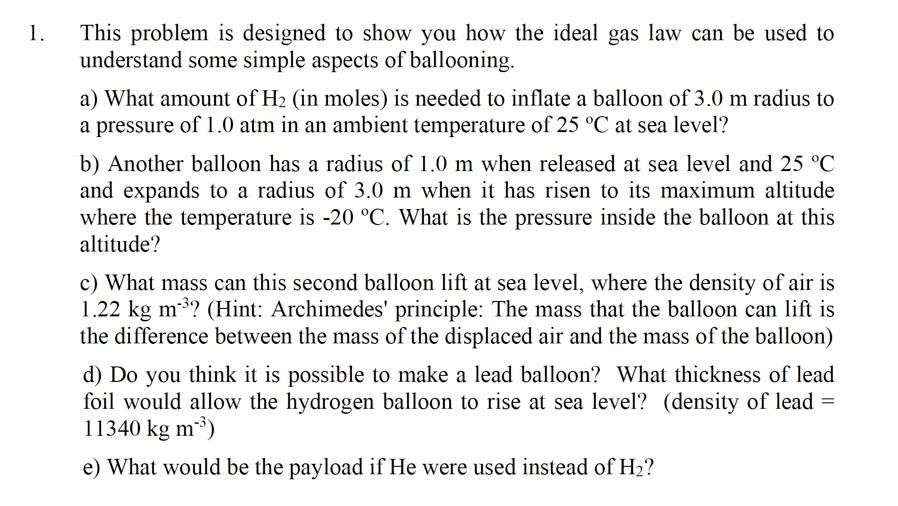Answered step by step
Verified Expert Solution
Question
1 Approved Answer
***Can you please help me answer part D. It is the part I am stuck on. Thank you! 1. This problem is designed to show

***Can you please help me answer part D. It is the part I am stuck on. Thank you!
1. This problem is designed to show you how the ideal gas law can be used to understand some simple aspects of ballooning. a) What amount of H2 (in moles) is needed to inflate a balloon of 3.0 m radius to a pressure of 1.0 atm in an ambient temperature of 25 C at sea level? b) Another balloon has a radius of 1.0 m when released at sea level and 25 C and expands to a radius of 3.0 m when it has risen to its maximum altitude where the temperature is -20 C. What is the pressure inside the balloon at this altitude? c) What mass can this second balloon lift at sea level, where the density of air is 1.22 kg m-3? (Hint: Archimedes' principle: The mass that the balloon can lift is the difference between the mass of the displaced air and the mass of the balloon) d) Do you think it is possible to make a lead balloon? What thickness of lead foil would allow the hydrogen balloon to rise at sea level? (density of lead = 11340 kg m) e) What would be the payload if He were used instead of H2
Step by Step Solution
There are 3 Steps involved in it
Step: 1

Get Instant Access to Expert-Tailored Solutions
See step-by-step solutions with expert insights and AI powered tools for academic success
Step: 2

Step: 3

Ace Your Homework with AI
Get the answers you need in no time with our AI-driven, step-by-step assistance
Get Started


